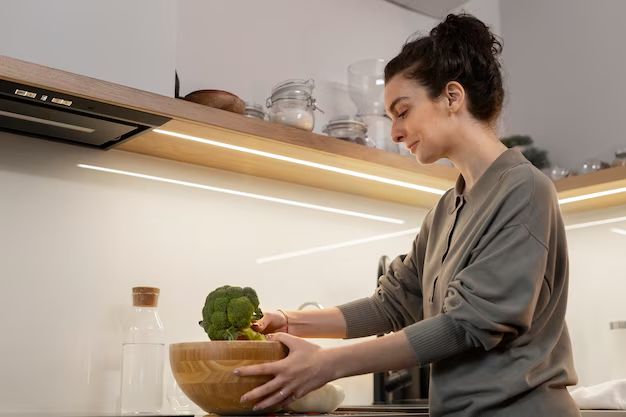Understanding the LP Refrigerator: A Complete Guide to Its Functionality
Picture this: you're miles away from typical amenities, embracing the beauty and simplicity of off-grid living. Among the few sophisticated conveniences in your possession, an LP refrigerator stands out as a marvel of engineering—quietly preserving your food without the dependency on electricity. How does this unique appliance work?
In this article, we delve deeply into how LP refrigerators function, exploring their various components and applications. Whether you’re considering one for your RV, cabin, or as a reliable backup at home, understanding its mechanics will empower you to make informed decisions about its usage and maintenance.
🔍 How Do LP Refrigerators Work?
The Magic of Absorption Cooling
At the heart of LP (Liquefied Petroleum) refrigerators lies the principle of absorption cooling. Unlike standard refrigerators that use a compressor and rely on electricity, LP refrigerators employ a heat source to produce the cooling effect. This heat source is typically a small propane burner that gently heats a solution containing a refrigerant.
The Cooling Cycle: The process begins in the generator, where the propane burner heats a mixture of ammonia, water, and hydrogen gas. The heat causes the ammonia to evaporate as it separates from the water.
Condensation: The ammonia gas then flows through a condenser, usually a series of metal coils, where it is cooled and condensed back into a liquid.
Evaporation: The liquid ammonia passes into an evaporator coil inside the refrigerator, where it evaporates again, drawing heat from the surrounding environment (inside the fridge) and thus cooling the interior.
Reabsorption: The ammonia gas now reabsorbs into the water solution in the absorber chamber, and the cycle begins anew.
Components Central to Operation
Understanding the primary components is crucial for maintenance and troubleshooting:
- Generator: Where the initial heating occurs, powered by burning propane.
- Condenser Coils: These dissipate heat, allowing the ammonia to condense.
- Evaporator Coils: Located inside the fridge, where cooling takes place.
- Absorber: Where ammonia is reabsorbed into the water, allowing the cycle to repeat.
Advantages of LP Refrigerators
Choosing an LP refrigerator is a decision driven by several practical benefits:
- Energy Efficiency: Since the unit employs heat to create a cooling cycle, it uses minimal amounts of LP gas, making it an environmentally friendly choice.
- Flexibility: Being independent of the electrical grid, they are ideal for remote or mobile living scenarios.
- Quiet Operation: Without moving parts like compressors, LP refrigerators operate silently, providing peace and quiet in your living space.
🛠️ Setting Up and Maintaining Your LP Refrigerator
Installation Considerations
Installing an LP refrigerator is straightforward but demands attention to key details to ensure proper performance and safety:
- Ventilation: Proper ventilation is paramount to prevent the buildup of potentially dangerous gasses and ensure efficient cooling.
- Level Placement: LP refrigerators must be level to allow the internal chemicals to circulate properly. Uneven placement can hinder performance and lead to cooling issues.
Regular Maintenance Tips
To extend the lifespan and performance of your LP refrigerator, regular maintenance is important:
Check the Burner: Ensure the heat burner is clean and the flame is properly adjusted. A yellow flame can indicate incomplete combustion, which is inefficient and possibly dangerous.
Inspect Gas Connections: Regularly inspect connections and hoses for leaks by using a simple soap solution test. Gas scent or bubbles indicate leaks that need prompt attention.
Clean the Cooling Unit: Periodically clean dust and debris from condenser coils and other exposed parts to enable effective heat dissipation.
Monitor Door Seals: Ensure the fridge door seals are airtight to maintain temperature stability and efficiency.
📈 Choosing the Right LP Refrigerator for Your Needs
Types of LP Refrigerators
Size and Capacity: Determine the size based on your space and usage requirements. Smaller units are suitable for RVs or compact cabins, while larger units are ideal for family use in larger spaces.
Portability: For those with varying needs, consider whether the refrigerator’s portability suits your lifestyle. Some models are easier to move and integrate into different environments.
Features to Look For
When selecting an LP refrigerator, look for features that enhance functionality and convenience:
- Thermostatic Controls: Opt for models with adjustable thermostats to easily manage temperature settings.
- Automatic Changeover: Some advanced models switch automatically between propane and electric power, offering flexibility and convenience.
- Energy-Saving Options: Look for models designed to minimize LP gas usage, which can include advanced insulation and efficient burners.
🌟 Practical Consumer Tips & Key Takeaways
Here is a quick summary and useful tips for current or prospective LP refrigerator owners:
- 💡 Stay Level: Always ensure the refrigerator is level to maintain efficient operation.
- 🔍 Inspect Regularly: Regularly check connections for gas leaks and ensure burners are clean.
- 💧 Monitor Door Seals: Check the refrigerator's seals for air-tightness to avoid temperature fluctuations.
- 🚐 Go Modular: In spaces like RVs, consider models with built-in flexibility for easier relocation and use.
- 🌿 Keep It Green: Save energy by minimizing door openings and maintaining optimal settings for your environmental conditions.
Future Trends and Considerations
Embracing sustainable living solutions, LP refrigerators are part of a growing trend toward minimizing dependence on traditional power sources. With rising concerns about energy efficiency and ecological impact, more consumers are drawn to solutions that offer practicality and reduced carbon footprints.
Battery and Solar Combinations: Looking ahead, the combination of LP refrigerators with solar panels or battery systems could become more common, further enhancing their utility in completely off-grid environments.
By understanding the inner workings of LP refrigerators and their unique advantages, users can fully leverage this technology to enhance their off-grid living experience. Whether you’re an adventurer, a minimalist, or someone simply looking for reliable backup cooling, LP refrigerators offer a fitting solution with unmatched durability and efficiency.
